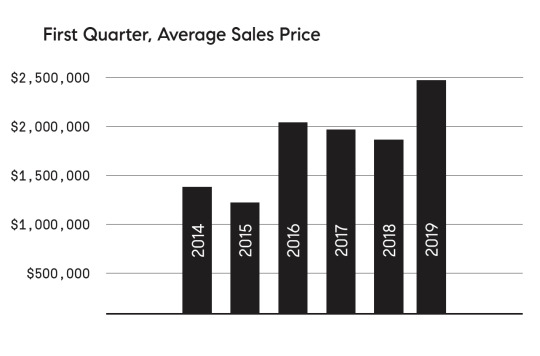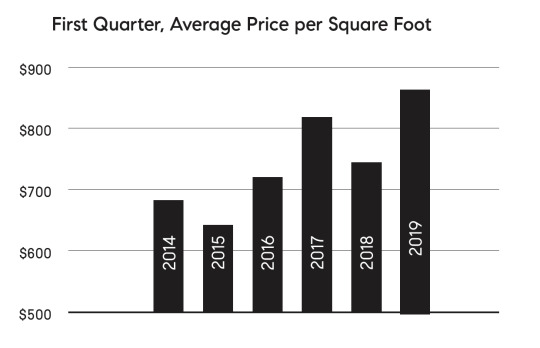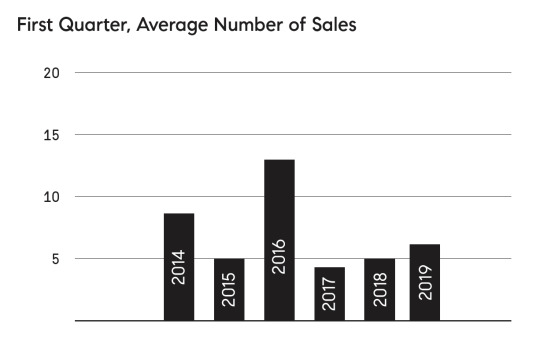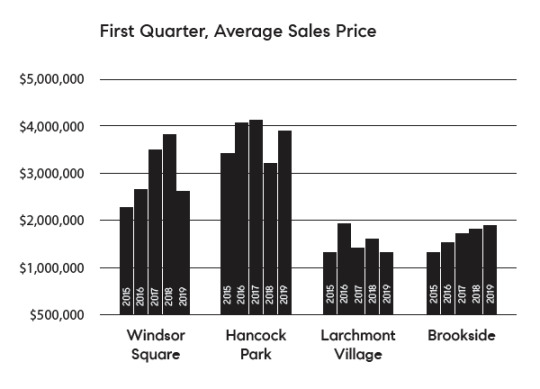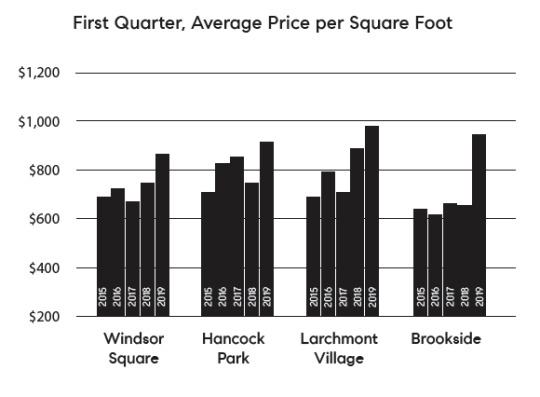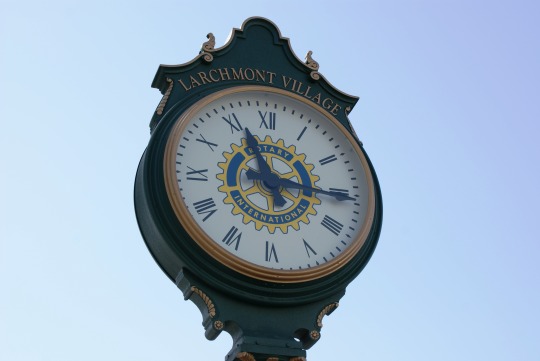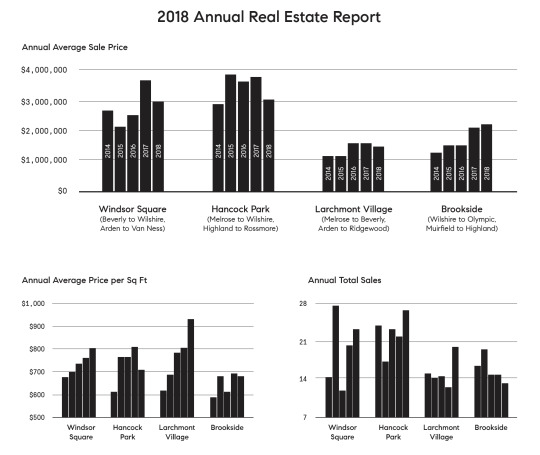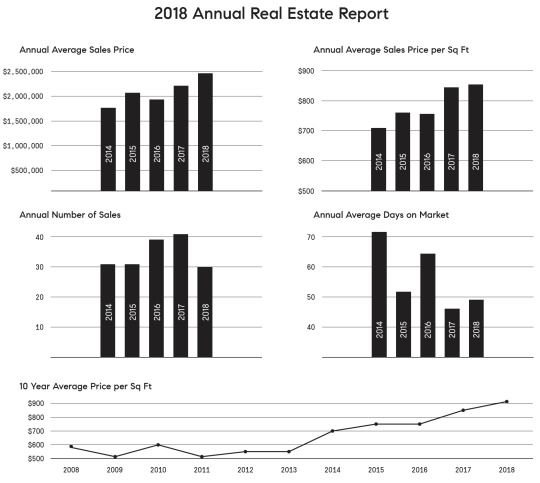Text
Our Blog Has Moved!
Visit our new blog at www.chasecampen.us/blog.

0 notes
Text
The 10 Hottest Burgers to Try in LA Right Now, Spring 2019
The newest, juiciest places to get burgers in Los Angeles
by Cathy Chaplin and Eater Staff, updated May 14, 2019
Hamburgers may very well be the quintessential food of Southern California. The combination of ground beef and bun is so deeply entrenched in Los Angeles’ dining culture that there’s always a new creation to taste in and around the city. From the smash burgers at Love Hour and Burgers Never Say Die to the vegan contenders at Honeybee and Burgerlords, there’s much to celebrate in the city’s dynamic burger scene. Here now are the 10 newest hamburgers to try in Los Angeles.
Removed: Petit Trois Le Valley, Electric Owl, Severance, Easy’s, Monty’s Good Burger, Here’s Looking At You, fundamental DTLA, Cassell’s Hamburgers DTLA, HiHo Cheeseburger, Free Play
Added: Love Hour, Burgerlords Highland Park, Honeybee Burger, Five Leaves, The Restaurant at Arts District Firehouse Hotel, Buddy’s, Burgers Never Say Die, The Window at American Beauty, Goldburger, Mister O’s
Note: Restaurants on this map are listed geographically.
1. The Window at American Beauty
425 Rose Ave, Venice, CA 90291, (310) 412-0075, Visit Website
The Window offers an unbeatably priced $3.95 cheeseburger—$5.95 for a double or $7.95 for an Impossible Meat version. It’s pretty hard to pull off a sub-$8 menu in expensive Venice, let alone on Rose Avenue, but the team is keeping costs low with its service model, only offering a few seats in the parking lot for diners.

2. Mister O’s
11838 Ventura Blvd, Studio City, CA 91604, (818) 358-3839, Visit Website
Mister O’s keeps it simple with its signature burger. Piled atop the plush potato bun are crowd-pleasing things like grilled green onions, American cheese, and pickled Fresno chilies.
3. Love Hour
3515 Wilshire Blvd, Los Angeles, CA 90010, (213) 381-7411, Visit Website
Love Hour is one of the newest players in the city’s pop-up smash burger scene, making appearances at Smorgasburg on Sundays and even The Line Hotel in Koreatown. The super-simple menu is comprised of single and double patty smash burgers and fries.

4. Five Leaves
4845 Fountain Ave, Los Angeles, CA 90029, Visit Website
The Brooklyn-based daytime cafe, afternoon cocktail spot, and dinnertime charmer has arrived in East Hollywood. Chef Warren Baird oversees the all-day menu, which includes the Five Leaves burger made of grass-fed beef, grilled pineapple, pickled beets, and a fried egg, all on sesame brioche.
5. Honeybee Burger
1820 N Vermont Ave, Los Angeles, CA 90027, (323) 452-6500, Visit Website
Honeybee takes up residence on the busy Vermont block, right next door to Tacos Tu Madre in the former WKNDR space. The all-plant menu includes hamburgers, sweet potato fries and tots, and sweet options like shakes and soft serve.
6. Burgers Never Say Die
2388 Glendale Blvd #A, Los Angeles, CA 90039, (323) 922-6161, Visit Website
Now that Shawn Nee has moved his backyard flattop to an actual restaurant at the edge of Silver Lake, fans of his smash burgers can get a fix anytime a craving hits. Best of all, there’s CVT soft serve for dessert.

7. Buddy's
363 S Broadway, Los Angeles, CA 90013, (213) 265-7022, Visit Website
Located on the corner of 4th and Broadway, Buddy’s is serving up everything from burgers to fried chicken sandwiches to smashed garlic grilled cheeses and housemade pie for under $10. The $7 cheeseburger with lettuce, tomato, onion, mustard, and American cheese is the thing to get.
8. Goldburger
777 S Alameda St, Los Angeles, CA 90021, Visit Website
It’s tough to track down Goldburger, but those who persevere are rewarded with awesomely smashed cheeseburgers charred and melted just right. Catch the pop-up on Sundays at Smorgasburg and on Fridays at Tabula Rasa Bar on Hollywood Boulevard.

9. The Restaurant at Arts District Firehouse Hotel
710 S Santa Fe Ave, Los Angeles, CA 90021, (213) 947-3010, Visit Website
The shiniest burger on the Arts District block comes from Ashley Abodeely, formerly of NoMad LA and Eleven Madison Park in NYC. Hot off the wood-burning grill, the Firehouse burger comes piled high with smoked onions, spicy mayo, and plenty of cheddar.
10. Burgerlords
110 N Ave 56, Los Angeles, CA 90042, Visit Website
Taking over the former Good Girl Dinette space in Highland Park is Burgerlords, the Chinatown burger shack that’s been winning over carnivores and herbivores alike. The dairy-free shakes made of Soom Tahini are just the thing to wash it all down.
0 notes
Text
What Measure EE Means for Schools and Housing Costs in Los Angeles

On June 4th, Los Angeles voters will be able to cast their ballots on a proposed property tax for LA schools. If approved by two-thirds of voters, Measure EE would institute a new parcel tax on residential and commercial property throughout the Los Angeles Unified School District. The new tax would raise an estimated $500 million a year (or about $750 a student) over 12 years to help fund district and charter schools within the boundaries of the LAUSD. The measure is supported by Mayor Eric Garcetti, but is not without its opposition. In anticipation of the June 4th election, we’ve unpacked some of the key provisions
outlined in Measure EE, and what they could mean for homeowners & housing costs in the Los Angeles market.
The Basics
Approval of Measure EE would authorize a special tax of $0.16 per square foot in residential and commercial buildings (the taxable square footage listed on your property tax bills) located on taxable parcels within LAUSD boundaries. The
tax does not apply to land. At this rate, the cost to the owner of a 1,000-square foot house would be $160 per year. The tax would be levied annually beginning in the 2019/2020 fiscal year, and continue for 12 years.
Proceeds
According to the Los Angeles County Counsel, proceeds from the tax would be used for: lowering class sizes; providing school nursing, library, and counseling services and other health and human services for student support; providing instructional programs, school resources, and materials; retaining and attracting teachers and school employees; and providing necessary administrative services. No proceeds from this tax can be used for purchasing school lots, building or modernizing schools, funding legal settlements and liabilities, and operating schools outside the boundaries of the District.
Allocation
Funds generated by the Measure for allocation to Local Charter Schools would be based on the schools’ in district average daily attendance. The Board shall establish rules, procedures, time requirements, and standards for allocation and distribution of funding, including, but not limited to, an appeal process for the Local Charter Schools.
Exemptions
Any property otherwise exempt from property taxes in a tax year would also be exempt from this tax in the same year. Additionally, any owner of a parcel who occupies the parcel as a principal residence who is 65 years or over, receives supplemental security income for a disability (at any age), or receives social security disability insurance benefits, and whose annual income does not exceed 250 percent of the 2012 federal poverty guidelines, may apply for tax exemption.
Opposition
Opponents of Measure EE have criticized the bill as lacking any guarantee of funds reaching the classrooms as promised, and worry that the funds may be used to temporarily fix a budget deficit. The Daily News has noted that “Parcel taxes tend to take a greater percentage of income from lower-income taxpayers,” adding that the new tax would add hundreds of dollars annually to homeowners’ tax bills and thousands to the annual expenses of supermarkets, retail stores, office buildings, warehouses and commercial facilities. Some opponents worry that these annual increases will encourage rent hikes and higher living costs in lower income neighborhoods, while supporters point to rent stabilization ordinances as being already in place to prevent this. Be sure to get out and cast your vote on June 4th! Visit LAVote.net to find your polling place.
- - - - - - - - - - - - - - - - - - - - - - - - - - - - - - - - - - - - - - - - - - - - - - - -
Update on State Measure SB 50
SB 50 would eliminate some local zoning restrictions and allow for denser housing construction along transit corridors and in single-family neighborhoods. California’s Senate Appropriations Committee decided recently that SB50 would not come up for a vote until January of 2020. I’ll provide an update closer to the date.
0 notes
Text
10 Tips to Prepare Your Home for Summer

Summer means gardening, grilling and more time outside. It’s also the time of year to give your home some much needed sprucing. Here are 10 useful tips to get your home ready for the season.
1. Think ahead: summer discounts
Many maintenance and cleaning companies offer significant discounts during the slow summer months. Consider carpet cleaning, gutter installation, window washing and even have your furnace checked out.
2. Prevent water damage
Prevent water damage by having the roof, windows, gutters, foundations and doors checked. Anywhere there is trim needs to be inspected to make sure there are no cracks, leaks or worn away caulking. Checking this early can save you a lot of money on repairs from damage in the future.
3. Check cooling units
If you have an AC unit that you run daily, make sure to wash its filters every month. This can keep your energy bill down. It’s also advisable to have someone inspect the refrigerant levels and to make sure the coils are thoroughly cleaned. Cleaning away debris and grass growing around the outside condensing unit can ensure that it works correctly.
4. Keep tabs on paint
Summer is the best season for painting a home or fence. It can make your house look fresh and helps protect wood from rot and mold. Preventative touch up jobs can save you a lot of money you would have to spend on repairs. It’s also a good idea to consider pressure washing the exterior walls before you paint, to remove dirt, stains, and mildew that paint can’t hide.
5. Trim shrubbery and trees
Since you’re having other things in your home inspected, don’t neglect the greenery on your property. Have trees, shrubs or even large plants that touch your house cut. Summer wind and rain can cause these to rub up against and seriously damage the roof or sides of your home.
6. Clean the pantry
This task often gets neglected in preparation for summer. It’s actually one of the easier jobs. Grab a big trash bag and start removing all the goods that have expired or won’t be used. Dust and clean away any debris that has accumulated. Organize the remaining items so you can see the dates and labels, and donate or give away cans that aren’t going to be used.
7. Flip the mattress
Flipping your mattress should be done in both winter and summer and is an important part of preparing for the season. Not only does this ensure longer wear for the mattress but it also allows you an opportunity to clean under the bed. Some newer mattress technology only requires rotating so check if you have a more modern bed. It’s useful to vacuum the top of the mattress before and after flipping. If you suffer from summer allergies, invest in a hypoallergenic protection pad. This is also a good opportunity to put away the heavy winter bedding and replace with cooler summer sheets.
8. Protect the deck
Preparing the deck is not just dusting off the furniture and refilling the grill gas. You need to inspect that the boards, support system, railings, and spindles are all secure so no accidents happen. Tighten any loose screws and sand down boards that could look like they might cause splinters. To protect the wood from sun and water, consider applying a sealant, wood stain or paint to give your deck a longer life.
9. Pest control
Summer months also mean pesky summer insects who invade your home. As mentioned in #2 check whether your home is properly sealed. Replacing worn strips can also lower your energy bills. Spray the exterior of your house with a preventative insecticide to create a bug barrier. If you have screen doors or screen windows, inspect that there are no holes or tears. Inside your home, you should look under the sink and other warm areas for cockroach nests. Call an exterminator or use bug bombs to prevent an infestation before the little critters get a chance to grow.
10. Stock a first aid kit
Take stock of your medicine chest because summer often brings minor medical emergencies. Throw out all the expired medication and visit the pharmacy to replace the missing items. Make sure you have a fully kitted first aid kit, and don't forget the mosquito spray!
0 notes
Text
The Oaks: Monthly Spotlight on Local Businesses & Residents

Q&A with Mike Finizio
Investment Professional & Neighborhood Pride Program Volunteer
1. It's inevitable for anyone driving to or from their home in the Oaks that they'll see you patrolling the neighborhood with straw hat, rubber gloves and trash bag at hand. How did you take it upon yourself to provide such a critical role to the neighborhood and keep our streets clean?
On a walk with my buddy, Scott Riepe, one day about 15 years ago we noticed a lot of trash. My complaints were answered with his response that, instead of complaining, I should do something about it. That’s when the neighborhood cleanup began, and it has evolved over the years. My wife, Erin, refined the process. She requested that I wear rubber gloves for cleanliness and have two bags - one for trash and one for recycling. She’s the smart one of the household. I listened.
2. One can't help but notice your overall level of fitness - either you are picking up some heavy trash items out there or walking the neighborhood is just one part of your fitness routine. Talk about the importance of fitness in your life and the dedication you place on it.
Walking is part of my fitness program. I do at least 2 miles a day here or wherever we are, even on vacation, and picking up trash is also part of that wherever we are. Manhattan is too much of a challenge though after two full bags, which happens in about one block! My regular fitness routine is 90 minutes a day in the gym, six days a week plus walking 2 miles a day every day. Throw in some push-ups and pull-ups twice a week.
3. You've now lived in the Oaks for 17 years; what do you love about the neighborhood?
My wife and I love the Oaks for many reasons. We walk to everything, and everything is within reach, but most of all, it’s the people we’ve met, our neighbors, and all the friends we have made. We love our neighbors.
4. Give us two restaurants in the neighborhood that you love that might not be on our radar.
Believe it or not, one of our favorite restaurants we found out about through the author of the last Oaks HOA article. She told us about La Pergoletta. We have been fans ever since. The Birds is a perfect go-to, and Franklin and Company has always been one of our favorites.
5. Keeping our neighborhood streets clean I'm sure makes you feel good and keeps you out in the fresh air, but what unintended benefits has that mission brought you?
NPP is the acronym given to the 2 mile walk and picking up trash. It stands for “Neighborhood Pride Program.” Other than keeping our neighborhood clean and beautiful, I have been very fortunate to meet so many neighbors while walking and picking up trash. On the walk, I also enjoy handing out dog treats from Tailwaggers to our 4-legged neighbors. These dogs are protecting our neighborhood, keeping an eye on things and keeping our fellow neighbors in shape with all the walks. Dog treats are their reward.

0 notes
Text
Now is the time to start registering for summer camp!
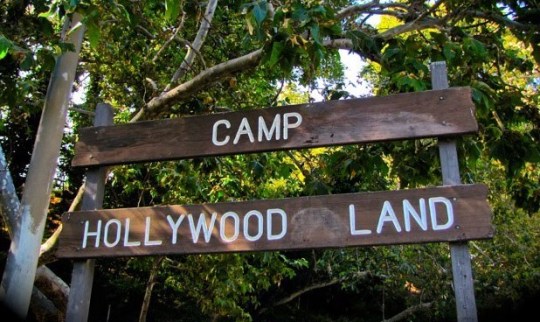
Each year, more than 14 million campers attend summer camp in the U.S. In Los Angeles alone, we have over 450 summer camps to choose from, ranging from Sports Camps, Day Camps, Sleepaway Camps, Academics, Science, Tech, Acting, Special Needs, STEM, Drama and Improv, and many more. Below are 6 options that caught our eye, including one for families and one for grownups only. Happy planning, and we hope you and your family have the best summer ever!
Tom Sawyer Camp, Altadena, CA
Established in 1926, Tom Sawyer Camp has been committed to the idea that every child should experience carefree, constructive activities in the outdoors like Tom Sawyer and Becky Thatcher. Ensuring lots of adventure with friends, campers participate in a range of outdoor activities from horseback riding to rock climbing, windsurfing and even secret quests. Located in Hahamonga Watershed Park – above Devil’s Gate Dam in the Arroyo Seco.
Got Game Sports Camp, Hancock Park
Got Game Sports offers a day camp program for children ages 4-14 in the heart of Los Angeles. Providing campers the opportunity to personally customize their day based on their interests, the camp prides itself on a fun, stimulating and bully-free environment. Got Game Sports is located in Mid-Wilshire at Hancock Park Elementary School.
Camp Hollywoodland, Bronson Canyon
The City of Los Angeles Department of Recreation & Parks girls’ residential camp has been operating for over 90 years. Nestled in the Hollywood Hills, right under the Hollywood sign, Camp Hollywoodland provides an out-of-town experience right in the middle of the city. Offering swimming, climbing wall, outdoor living skills, nature awareness, field trips, and themed programs. For girls age 6-14.
Gold Arrow Camp, Lakeshore, CA
Since 1933, Gold Arrow Camp has provided campers with a supportive community where their lives can be enriched through friendships and experiences that teach valuable life skills. A structured program of over 20 different non-competitive water sports and traditional camp activities encourages campers to try new things, build their skills, and take risks. Gold Arrow Camp also offers programs for families, and is located in the heart of California's Sierra National Forest, approximately 5 hours north of LA.
French Woods Sports and Arts Camp, Hancock, NY
French Woods Sports and Arts Center is one of America’s top teen-only coed summer camps. A fully elective and affordable design allows campers to choose from traditional and not-so-traditional camp activities. Programs are offered in extreme sports, arts, technology, circus, rock music, music production, dance, DJ and radio, theater, magic, cooking, gymnastics, equestrian and more. Campers ages 12-17 come from all around the U.S. and abroad to their campsite in Hancock, New York, about 2.5 hours from NYC
Esalen Institute, Big Sur, CA
Looking for something just for yourself, browse through Esalen’s workshops ranging from arts & creativity, body & movement, leadership, meditation, spirituality, nature, relationship & self. Located in beautiful Big Sur, recharge yourself in any one of their retreats.
For more information on hundreds of other local summer camps, please visit lasummercamps.com or momsla.com/summer-camps-in-los-angeles.
0 notes
Text
The Oaks: Monthly Spotlight on Local Businesses & Residents

Q&A with Jason Bleick, Founder, Ever
ever-usa.com | @everlosangeles
Ever is a Los Angeles based premium apparel brand committed to regenerative organic agriculture and doing our part to reverse climate change on this planet.
What inspired you to create Ever?
Regenerative Agriculture (RA) inspired me. I was working on a brand identity project for the team at Cafe Gratitude and was introduced to RA. At that moment, I knew I had to introduce this to the apparel industry. Regenerative Agriculture is a system of farming principles and practices that increases biodiversity, enriches soils, improves watersheds, and enhances ecosystem services. Regenerative Agriculture aims to capture carbon in soil and aboveground biomass, reversing current global trends of atmospheric accumulation.
How does Regenerative Agriculture differ from conventional farming practices?
The focus of RA is on improving and revitalizing soil health. Regenerative organic agriculture can sequester carbon and reverse climate change. Conventional farming can’t do this. 65% of conventional cotton production ends up in our food chain, directly through food oils or indirectly through the milk & meats of animals feeding on cottonseed meal and cotton gin byproducts.
What is Everspun Luxury Yarn?
Everspun yarn is the first ‘Regenerative Organic Luxury Climate Beneficial Yarn’. Designed to help reduce global warming and developed with the highest level of responsibility. We grow our own cotton in South Carolina and we work with an Alpaca ranch in Oregon where we source our animal fiber for the Everspun yarn. The cotton fiber and the Alpaca fiber are spun together with a special recipe to make up the Everspun yarn.
What’s next for Ever?
Over the next 6 months we will be adding pieces into the collection online.
What is your favorite part about living in The Oaks?
My favorite thing about living in The Oaks is that it feels like you are in nature, but also in the city at the same time. There are deer, coyotes, raccoons, squirrels, owls, etc that you see frequently while over your shoulder is the Hollywood sign. It’s the perfect mix. Being able to walk out the door and go for a hike, or be shopping in the city in a few minutes is amazing.
0 notes
Text
Larchmont Living: Monthly Spotlight on Local Businesses & Residents

Q&A with Andrew Hutcheson, Managing Director, The Hutcheson Group
alexbrown.com/thehutchesongroup | (424)-303-6362
The stock market has been on a steady surge since the economic downturn in '08, though over the last two years or so it's been quite volatile. The market fundamentally remains a great investment vehicle, but how do you calm the nerves of clients who see wild swings in short periods of time?
I always find it interesting, the perception of the stock and bond markets, and then the daily reality. After the downturn in late 2007 through mid 2009 (which admittedly was quite drastic) the markets went almost in a straight line up. There were a couple of little blips, the taper tantrum etc. but it was rather uneventful, just daily positive numbers.
So, now we have the return of volatility in the markets and people are becoming anxious and uncomfortable. The reality is the market is cyclical and should go through a period of retraction and expansion. I really think that it makes the case for active management of portfolios and proper asset allocation, which will give investors a “plan” for the times when the market isn’t moving straight up.
You are also an expert on executive compensation and planning, and advise numerous corporations in that regard. Talk about your work in that space.
Early in my career I realized that one of the most important aspects of any company is the people that work for that company. I saw that there were not many advisors out there who were providing more than just the basic 401k solution to their corporate clients. I became an Institutional Consultant, which allowed me to go into these various companies and sit on the same side of the table as them as a co-fiduciary. In doing so, we utilize all of the solutions that are available to help companies recruit, reward, and retain talent. We also advise them on the proper utilization of the different benefits for all of their employees. So we can help the executives and, through proper financial education, the non-highly compensated employees.
You've introduced a range of investment vehicles to your clients including land opportunities, Real Estate Investment Trusts and pre IPO stock plays. Describe your strategy for proactively bringing such a diverse array of investment options for your clients that might be beyond the scope of a typical advisor.
Through my work as an Institutional Consultant, I am working with a wide array of companies every day. We discuss strategy and alternative forms of liquidity. And, my firm also gets introduced to a number of opportunities. These discussions often lead to interesting and alternative investments that aren’t the normal stock and bond type of investments. Therefore, we are able to show our clients investment ideas that they will not ever see anywhere else. These ideas don’t go out far and wide to the general marketplace. So, we are always looking for interesting, out of the box, investments that can ultimately add value to our clients overall portfolio. I think that a lot of people should have more access to these type of investments not just a select few.
You've interviewed some fascinating people on your Podcast, "What it All Means." What's your goal with the Podcast and what drove you to seek out success stories from other businesspeople and want to share them with your audience?
“What it All Means” came from a question that came up in a meeting I was having with the CFO of a technology company. She asked, after looking at a personal financial plan that we created for her, “so, what does it all mean?” And I asked her the question right back, “What does it all mean to you?”. The purpose was to find out what motivates people to succeed or flourish in their choice of profession. There really is no definitive answer to that question, it’s different for everyone. So, I decided it would be interesting to do a podcast with people who have achieved “success” and what was important to them. I found that for most people, it wasn’t simply making more money. They had a passion or desire that, for lack of a better term, forced them to do what they do. They were constantly learning and inquisitive. I think the guests we have are from diverse backgrounds and industries, so the listener can hear things from some different points of view. There is a lot of noise and information out there now, and I felt that speaking to people who have that spirit that can inspire, really can be interesting and influential.
You and your family have called Hancock Park home for many years; what do you love about the neighborhood?
We have lived in Hancock Park since 2004. What drew us to the neighborhood then, is what keeps us here now. I think it’s one of the few places in the city that has the old world feel of community and city. Many of us have kids of the same age, we feel safe having them go to Larchmont and going to dinner with their friends. Yet, we are in the heart of the city, so there is a lot of diversity from a cultural standpoint, which I feel is really important as well.
Disclosure:
Raymond James financial advisors may only conduct business with residents of the states and/or jurisdictions for which they are properly registered. Therefore, a response to a request for information may be delayed. Please note that not all of the investments and services mentioned are available in every state. Investors outside of the United States are subject to securities and tax regulations within their applicable jurisdictions that are not addressed on this site. Contact your local Raymond James office for information and availability. Please follow this link to additional disclosures:
http://raymondjames.com/smrja.htm Alex Brown - A Division of Raymond James, Raymond James & Associates, Inc., member New York Stock Exchange/SIPC
#chaserealestate#larchmontliving#hancockpark#losangeles#losangelesrealestate#compass#compassrealestate#andrewhutcheson#hutchesongroup
0 notes
Text
Grove builder Rick Caruso reimagines Miramar resort with splashes of seaside splendor

LA Times, by Roger Vincent, March 3, 2019
In a quiet garden at the Rosewood Miramar Beach resort in Montecito is a white marble statue of the Buddha, laughing while four small children clamber up his side.
The latter is a clue this is not your typical religious shrine.
The Buddha had only one child, according to texts, but resort owner Rick Caruso has four — and so the playful stone statue has a bigger brood.
It’s just one of the subtle references to the Caruso family that can be found at the new resort, which may be the most intensely personal — and upscale — project yet for the Los Angeles real estate magnate.
Caruso, who started his development career with a modest mall on La Cienega Boulevard, went on to build successively grander shopping venues including the landmark Grove, the Fairfax District “lifestyle center” that pioneered a wave of outdoor malls that meld shopping with food and entertainment.
Last year, he completed a $200-million village center for tony Pacific Palisades with small shops and restaurants evocative of East Hampton’s main street.
Now, the 60-year-old has reached higher still, completing his first venture into the hotel business with a splash that he hopes will earn the Miramar prestigious five-star and five-diamond ratings.
And it has prices to match, with rooms that cost more than $800 a night on the low end and reach $5,575 for a grand suite. Rooms over the sand begin at $1,075 a night.
Its nearest competitors are the four-star Four Seasons Resort the Biltmore Santa Barbara and the four-diamond Ritz-Carlton Bacara, Santa Barbara.
And though it is operated by Rosewood Hotel Group, a Hong Kong-based chain with luxury hotels across the globe, it is very much a Caruso property.
Among other family references are his children’s initials capping the directional arrows on a weather vane and the Caruso family crest mounted discreetly amid a leaded glass window overlooking the Pacific.
Then, point blank, there is Caruso’s, the resort’s swank Italian restaurant.
Patrons can dine a few feet above the sand, viewing the surf from high-backed booths intentionally reminiscent of Perino’s, a midcentury Los Angeles restaurant on Wilshire Boulevard that catered to the city’s business and entertainment industry elite for decades.
Caruso hopes the Miramar won’t change hands again for a long time, which is one of the reasons he added so many personal references during its creation.
“I build them with the hope and dream they will stay in the family until the end of time,” he said. “It’s just a fun thing to create a link between generations.”
On a recent chilly afternoon, Caruso cut a rakish figure strolling through the hotel’s Manor House in a snug gray double-breasted suit, wearing dark glasses and trailing behind his leashed dog Dodge — very much carrying himself like the man Forbes said is worth $4 billion. The docile golden retriever is his constant companion and later fell asleep at Caruso’s feet as he sat in the Miramar’s main restaurant, Malibu Farm, which serves farm-to-table fare.
Caruso appeared a bit weary himself, understandably. After buying the property for $50 million in 2007, he spent more than a decade working with the neighbors and navigating a complicated approval process that required applications to state, county and local agencies. In recent months, it was a race to get the resort ready for its March 1 official opening date, with nearly 1,300 laborers a day working double shifts.
And he’s had other duties in addition to running his existing properties and building in Pacific Palisades. As chairman of the USC Board of Trustees, he has faced tumult in recent months including the removal of Marshall School of Business Dean James Ellis and a $215-million settlement for former patients of disgraced campus doctor George Tyndall in a sexual abuse scandal.
Amid the tumult, he’s kept focused on his ambitious goals for the Miramar, which he proclaims are nothing less than “to reinvent hotels” — with a nod to the customs of yesterday’s leisure class. “The grand old hotels of Europe were more like residences.”

Caruso has a reputation as a big-spending developer who packs expensive details into his projects to help give them the kind of visual punch that led the Wall Street Journal to call him “the Walt Disney of retail” last year.
The Grove and the Americana at Brand mall in Glendale reflect his bent for extravagance and his personal tastes, such as jaunty Frank Sinatra tunes piped outdoors and, at the Americana, an 18-foot-tall gold-plated statue called “Spirit of American Youth” rising in the middle of a dancing fountain.
At the Miramar, however, Caruso has gotten a chance to indulge the tastes developed first through his childhood in Beverly Hills and later through accumulation of the fortune that has made him one of the wealthiest businessmen in Los Angeles.
The resort takes some broad design cues from the Beverly Hills Hotel, which took its famous form during a 1940s makeover created by Paul Williams, a revered Los Angeles architect whose influence now pervades the Miramar.
Perino’s signature booths were designed by Williams, who died in 1980. The hotel is meant to have the look and feel of a grand 1930s home designed by Williams, starting at the black lacquered front door with a brass mail slot.
Inside, guests find themselves in a soaring mansion-style foyer flanked by a curving staircase made using Williams’ blueprints for a legendary home completed in Beverly Hills in 1933 for auto titan E.L. Cord.
Caruso explains that Williams’ granddaughter is a friend and shared Williams’ hand-drawn plans for the Southern Colonial-style Cord estate, which Caruso framed and mounted discreetly near the foyer.
The residential sensibility prevails throughout the hotel designed by a team led by architect Dave Williams (no relation to Paul Williams), Caruso’s executive vice president of architecture. From the front door, visitors can see straight through what looks like a casually elegant living room and veranda, past a wide lawn and finally to the ocean.
Most of the 16-acre site — almost as big as the Grove but with a feel much larger since little acreage is taken up by parking — is landscaped open space, which Caruso hopes will help put guests in vacation mode. “It’s to lower everyone’s blood pressure,” he said.
In addition to the Manor House, which includes a spa, there are bungalow-like guest room buildings spread along meandering paths. There are two swimming pools and seven eateries, including a poolside shop that serves hamburgers and local ice cream.
He declines to talk about how much the Miramar cost, but Bacara reportedly cost $222 million to build in 2000.
Pricey design flourishes and materials can be seen in all directions at the Miramar including a Brazilian walnut deck at the seaside bar, hand-painted wallpaper and custom-designed Baccarat crystal chandeliers in the ballroom.
Original artworks abound, including a 1937 Norman Rockwell painting called “Scout of Many Trails” in an event space called the Study and a whimsical Fernando Botero painting titled “Two Drunks” in the Manor Bar.
The sundry shop is a Goop store, founder Gwyneth Paltrow’s first outlet in a hotel.
Caruso builds in a way many other developers would consider extravagant because he can. “I don’t have investors,” he said. “I get the freedom to make decisions I think are best.”
But Caruso is ever watchful of his bottom line.
The 161-room resort already has 25 weddings booked, and he has other ideas for programming that Caruso has honed in his retail centers, along with advertising sponsorships and promotions such as “date night” and “Mommy and me” events.
He pictures people wandering up to the hotel bar after a barbecue “burger bash on the beach” and smiles as he contemplates the promise held by the resort’s two bocce courts — a bowling game that has become hip but is ancient and hints at Caruso’s Italian heritage.
“I bet the bocce ball league will bring in $1 million a year alone,” he said.
And Christmas, sometimes a slow period for seaside resorts, will be celebrated fancifully with decorations including trees for each room that guests can decorate themselves with provided ornaments or let the hotel staff do the job.
“When you allow people to have fun, you make money,” he said. “They become loyal, and they come back.”
Donald Wise, a hotel investment banker at Turnbull Capital Group, estimates that it will take five years to get the Miramar financially stabilized, but Caruso is in position to make it to that point.
Caruso “is obviously very well capitalized, unlike a lot of developers who have to put things together with mirrors.”
Indeed, the Americana at Brand opened in 2008 amid the financial crisis, but Caruso weathered that storm.
The Miramar is one of only a handful of hotels in Southern California that is directly on the beach, which gives it a competitive advantage, said Wise, who was not involved in its sale or development.
Rosewood, which operates luxury properties across the U.S. and some two dozen countries, could help deliver the top-level five-star and five-diamond industry ratings Caruso seeks, Wise said. If that happens, the Miramar would probably be the only five-star hotel in the world with an active railroad running through it.
Ten freight trains and two passenger trains roll through each day on tracks that cleave the edge of the property between the main Manor House complex and the waterfront suites, bar and Caruso’s restaurant.
To diminish its impact, Caruso raised the level of the hotel grounds. “The train loomed over you before,” he said. “We put a cool bar by it, and now it’s part of the experience” of being at the Miramar. The nearby beach guest rooms also are on base isolators to contain vibrations from the trains.
For many years guests arrived at Miramar by train, starting in the 19th century when the Miramar became a favored destination of the well-to-do including snowbirds from the East who would spend winter there.
The inn’s history dates to the 1880s, when landowners Josiah and Emmeline Doulton turned part of their farm into a hotel, said Michael Redmon, director of research at the Santa Barbara Historical Museum.
The Doultons soon named it Miramar, or “Behold, the sea” in Spanish. By 1902, The Times was reporting on arrivals of the well-to-do, such as the widow of a railroad magnate who arrived from Boston for the season with her maid and chauffeur in tow.
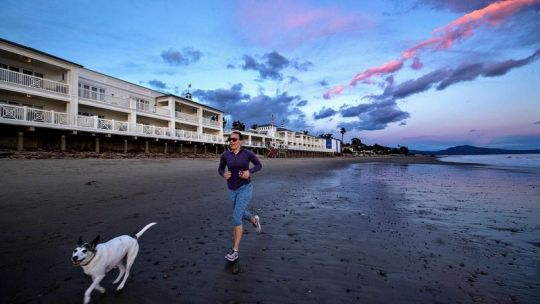
The Miramar is remembered perhaps best among the living as an unassuming seaside getaway where families with kids and dogs could afford to spend a relaxing weekend nestled between the peaceful Pacific and dull roar of Highway 101.
The Doulton family sold the Miramar in 1939 to Paul Gawzner, who revamped the property and added a swimming pool. By the late 20th century, the resort was known to some for its air of “Catskill kitsch” — with its shuffleboard courts and waiters who once tooled around the grounds on bicycles, trays from the kitchen mounted on their baskets.
Gawzner sold the Miramar in 1998 to night club and hotel impresario Ian Schrager, who closed the inn in 2000 to make renovations. Work stopped as the economy soured and the partly demolished hotel became a local eyesore.
Toy manufacturer Ty Warner, who became a billionaire through his Beanie Baby plush toy line, bought the Miramar in 2005 with plans to renovate the property but ended up selling it to Caruso less than two years later.
Caruso razed almost the entire site, saving only the original owner’s wooden residence, which stands just off the hotel grounds. It’s being restored, but no use for it has been planned yet.
For now, Caruso is just enjoying his accomplishment of getting the Miramar up and running — a satisfaction he is sharing with his family.
The Carusos, including Rick’s wife of 31 years, Tina, have their own residence in the Manor House.
Gigi Caruso, Rick’s youngest child at 18, said she and her siblings are taking particular pleasure in the family references her father slipped into the development, including quotes from their favorite literary figures painstakingly inlaid into stones on the veranda.
“It’s so fun seeing all our personal family references around the property,” she said. “It means so much to us that he involved us in the process.”
The developer’s next planned venture is residential. He built an ultra-deluxe 87-unit apartment building on the eastern edge of Beverly Hills in 2012 and now plans to erect a bigger one nearby on the site of his first development on La Cienega Boulevard that housed a Loehmann’s department store.
But that wasn’t really on his mind as he watched some of his first patrons enjoy the food at Malibu Farm. Instead, he’s just settling in at the Miramar.
“It was years of work,” he said.
0 notes
Text
L.A. School Board Asks Property Owners to Show Support with More Tax Money

LA Times, February 28, 2019
Los Angeles school officials once saw the January teachers’ strike as a calamity. Now they realize it created an opportunity.
Angelenos opened their hearts to teachers who talked of poor conditions at schools — and now they will have the chance to open their wallets in a June 4 special election.
The Board of Education voted unanimously Thursday to ask voters to raise their taxes in support of schools — the same voters who backed striking teachers by honking horns, handing out tamales, walking picket lines and keeping kids at home.
The tax measure, if approved, is projected to raise about $500 million a year, enough to close all or most of the gap between what the district already is spending and the revenue it receives from state and federal sources.
The tax would be calculated at 16 cents per square foot on a property owner’s habitable indoor space. It would apply to commercial buildings as well as single-family homes and apartments. There would be exemptions for senior citizens and those relying on disability payments to get by.
The levy, called parcel tax, will go before all voters living within the L.A. Unified School District and would require a two-thirds majority. It would be in effect for 12 years.
To sell the tax, the nation’s second-largest school system will assert that the money would do more than merely preserve the status quo.
The approved wording of the tax measure hits on themes teachers raised during the strike, promising that the additional funding would retain and attract quality teachers, reduce class sizes and provide more counseling, nursing and library services as well as support coursework in science, math, preschool, career education and the arts, while also ensuring safe and well-maintained schools. In other words, L.A. Unified wants more resources — on top of a $7.5-billion budget — to carry out the essence of its work.
Officials said they are ready to make the pitch.
“Education continues to be at the forefront of what working people want to invest in,” said school board President Monica Garcia. “Our job is to figure out: Can we play offense?”
“Many people judge our schools: ‘You waste money and the kids are loud,’” said board member Richard Vladovic. “You don’t know about the million miracles that occur in our schools every day.”
“The one thing we don’t want to do is fail,” said board member George McKenna. The district, he said, must go “all out” in its campaign.
An analysis provided by the office of L.A. Mayor Eric Garcetti says half of L.A. Unified homeowners would pay less than $235 a year. Most L.A. Unified homeowners would pay $100 to $450 a year. Garcetti supports the tax.
“There’s no higher priority for me and for this region than improving the quality of public education,” the mayor said Thursday. “We need to do it for our kids. We need to do it for our economy. We need to do it for our future.”
He emphasized the power of the walkout: “We start from a very strong base because there is the highest awareness of the needs of our schools that I’ve experienced in my adult life as a result of the strike and an increased focus nationally on public education.”
The tax measure came together quickly after results were compiled from a poll commissioned by L.A. schools Supt. Austin Beutner in the wake of the six-day action by members of United Teachers Los Angeles. The poll indicated growth in support for increased funding of public education.
But pollsters also warned that the strike effect could fade, which prompted officials to place the tax increase on the June ballot rather than wait for November or even next year. The sooner the money could be approved, officials said, the sooner it could flow to the schools. The deadline for getting on the June ballot is the end of next week.
At a special board meeting Thursday, speakers raised various concerns.
Advocates of charter schools want a proportionate share of proceeds for these privately operated, publicly funded campuses.
“Public charter school students are entitled to the same level and quality of educational services,” said Roxann Nazario, who has a child at a charter in the San Fernando Valley. “I ask that you stand for all kids.”
Cassy Horton, an official with the California Charter Schools Assn., objected to vague draft language that said money would be distributed to charters “fairly.” Charters serve nearly 20% of district students and should expect about $100 million of an annual $500-million levy, she said.
The final version struck out “fairly.”
But downtown resident Isaac Abdul Haqq took the opposite view.
“We don’t want our tax dollars going to the charter industry,” he said. “This has just been thrust upon us without any real community input.”
The teachers union during the strike spoke out for a cap on new charters, which compete with L.A. Unified for students.
Other speakers wanted the tax to end sooner or called for stronger accountability. A hospital industry representative said hospitals should be exempted. The Chamber of Commerce wanted a flat tax per property.
Board members listened but made no further changes, saying that that the measure already incorporated various compromises and that time was of the essence.
“This will make things better and I’ll take better,” board member Nick Melvoin said.
0 notes
Text
Metro tests low cost ride-sharing service to get riders to & from stations

With Uber and Lyft now carrying millions of passengers in Los Angeles County each month, Metro is testing its own ride-hailing service, operated by private transportation company Via.
A year-long pilot of the program launched Monday, and residents of El Monte, North Hollywood, and Compton will get the first crack at the new service, which offers rides to and from major transit stops in those areas.
“Many Metro users face a challenge getting from home to station and vice versa,” said County Supervisor Sheila Kuehl in a statement Monday. “They need a quick, easy, and inexpensive door-to-door solution and this new pilot is one to consider.”
Users can summon drivers through a smartphone app or by dialing Via’s call center (619-731-0710). Rides cost $1.75 with a TAP card and are free for those enrolled in Metro’s Low Income Fare is Easy program. The fare without a TAP card is $3.75.
Similar to Uber’s Express Pool option, the program allows drivers to pick up multiple passengers and users of the service may be asked to meet their driver at a specific location to avoid time-consuming shuttle detours.
Users also can’t use the service to get from, say, the grocery store to a friend’s house. Rides must start or end at one of three stations: El Monte, North Hollywood, and Artesia. Passengers must also travel within the boundaries of service zones around those stations.
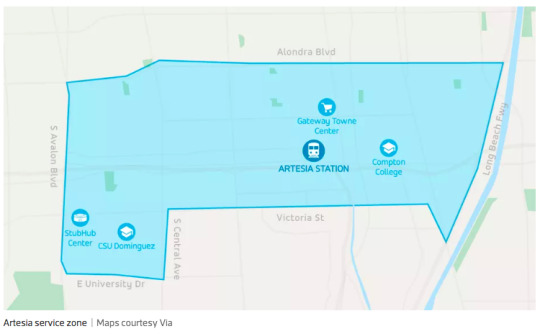


Metro CEO Phil Washington suggested Monday that, if successful, the service could provide a key solution to what transportation planners commonly refer to as the first mile/last mile problem: how to get riders who live in areas with poor transit service to and from places with trains and buses that can carry them where they need to go.
That could be a key issue as the agency builds new rail lines and revamps its extensive bus network. In spite of considerable transit investment over the last decade, Metro ridership has fallen dramatically in recent years. One survey of riders who stopped using Metro found that 12 percent did so because it was too hard to get to and from transit stops.
Original article by Elijah Chiland for Curbed LA.
#metro#la metro#via#uber#lyft#transportation news#los angeles#larchmontvillage#chase campen#news#la news#hollywood#north hollywood#el monte
0 notes
Text
The Oaks: Q&A with Tad Brown
Tad Brown is one of the most respected private client health and fitness coaches in Los Angeles and Beverly Hills. Tad mentors the health and longevity of producers, celebrities and neighbors ranging in age from 11 to 93. His gym is located right here in The Oaks.
Tad Brown, Tad Brown Fitness
(323) 314-6968 / [email protected]

What's your story, and what life experiences led you to become a personal trainer?
About 30 years ago, I was working on film & TV sets monitoring animal actors and I injured my head and back during a freaky on-set accident. I started physical therapy and learned the importance of keeping a strong body to be able to function better. Though I was 25 at that time, I was feeling so much healthier after training regularly, and that piqued my interest in learning more about the process. My Physical Therapist suggested I get trained, and over two decades later, I’m still helping people achieve their fitness goals.Every body is different, and I love helping people discover the amazing abilities of their bodies and develop health habits.
What is your fitness and training philosophy?
Getting to know my clients is the first step in assessing their fitness needs and goals. Then we’ll develop a training plan that includes tracking progress and learning about making healthy eating choices. I treat my clients the way I would want to be treated — with respect, and in a very safe and comfortable way to learning their limits, improving on those one day at a time.
You've created an amazing gym facility in your home. Talk about how the space you've created has become such a focal point in your training program.
This space is perfect for my work because it offers ultra private indoor and outdoor training areas. The main indoor area has great natural light from large glass doors that open to the private backyard, floor to ceiling mirrors and non-skid gym flooring with cardio equipment, a large selection of free weights and cable tri-station. I have always been an outdoorsy guy, so my outdoor space is just as important to me. Training in the front yard (up a gated driveway that is surrounded by trees and high above the street) offers a picture perfect view of the Hollywood Sign while we swing kettle bells, whip the battle ropes or do some glute busters up the steep driveway. The backyard is protected by a wooden privacy fence (with private gate to Griffith Park trails) and the perfect place for a low impact aquatic workout in the pool. Sometimes a client can be stressed out so much that we put down the weights and go out the back gate and take a stroll through the park for 15 minutes in nature. Sometimes it requires a hike to the Observatory. Studies show that working out and/or hiking in a park environment reduces stress and increases mental function for up to 5 days in one 30-min session. I can’t ask for a better neighborhood to be in, and there’s always a warm greeting from our boxer and mascot, Lex.

It’s January and on many people’s mind is their New Year's resolution. How do you help your clients stay focused on their goals?
Together, we keep an eye on progress with measurements, photos (only if they want) and realistic milestones. I’m here to help my clients stay accountable, but not to make them feel bad for enjoying food, friends, family and vacations. I never say diet. This is our lifestyle. It’s always best to make small changes and incremental goals. Your life will change, and you will feel better and younger.
What makes you different from other personal trainers?
This is my 25th year training. Some of my clients have been with me for over 20 years — I care about my clients and feel so lucky to have developed some great friendships. Whether you are 15 or 92, I’m focused on your longevity, not just for today. I take care in teaching my clients about gym equipment, what muscles are being worked and how to be comfortable in a gym. I’ve helped college-age clients stay in shape over the summer months, adults get back to their college shape, and body building physique competitors to medal-winning bodies. I have clients skiing in their 80’s. This is my life-long career and I won’t retire. I will always have a gym in the house, and having my clients also keeps me inspired and healthy. I’m going to be 54 this year, but I feel like I’m in my 30s. My husband and I enjoy giving back to our community with passionate support of the homeless youth and senior programs at the Los Angeles LGBT Center, Hollywood Bowl, Griffith Park & The Oaks neighborhood Councils, and Boxer Rescue L.A. We’re both California natives and love volunteering and helping drive change in our community.
0 notes
Text
The US Bank Tower is on the market

Downtown LA’s U.S. Bank Tower, the second-tallest building west of the Mississippi by a spire, is for sale.
The asking price is reportedly $500 per square foot, or approximately $700 million, says commercial real estate publication Real Estate Finance & Investment, which was the first to report the news.
The seller, Singapore-based OUE Ltd., purchased the tower on the border of the Financial District and Bunker Hill in 2013 for $367.5 million.
Beginning in 2015, OUE performed a $50 million round of upgrades to the building, revamping the building’s Fifth Street frontage, and adding an observation deck, that famed glass slide, and a giant LED screen inside the building’s glass-fronted ground-floor lobby.
“We’ve put a lot of money into it,” Peter Johnston, senior vice president with OUE USA Services Corp., told the Downtown News. Johnston noted that under OUE, the tower has gone from being roughly half empty to almost 85 percent leased.
“I just think we’re interested in testing the market,” said Johnston.
It would be a big test. A recent comparable sale, of Bunker Hill’s One California Plaza, yielded $460 a square foot, for a total of $465 million, notes the News.
Downtown’s office market is on the rise, with vacancy rates for the most in-demand and up-to-date office space dropping to 16.5 percent vacant last quarter compared to 17.6 vacant a year ago, according to the Los Angeles Times. Rental prices for that same type of office space have gone up slightly too.
A large contributor to the heightened demand comes from the increase in new residential projects Downtown and in entertainment and food options in the area, JLL real estate broker and office sales expert Tom Bohlinger told the Times.
“We have a demographic now that loves the urban environment,” Bohlinger said.
Original article by Bianca Barragan for Curbed LA. Featured photo courtesy of LiOrient.
#chase campen#larchmontliving#Downtown LA#dtla#us bank tower#LA skyline#tallest skyscraper#skyscraper#la views#investment#million dollar listing#news#la news
0 notes

